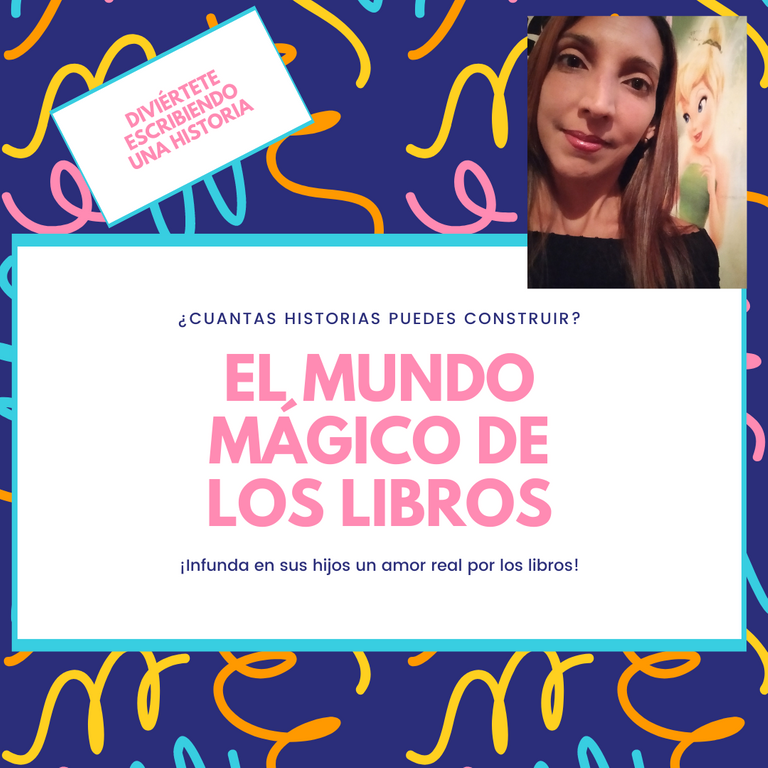
Espero sea de su agrado y les sirva para posibles usos educativos.
En ella se debía reflejar
Grado con el que aplicarían el recurso.
Instrucciones de uso del recurso elaborado.
¿Cómo se aplicará la estrategia? ¿Cuándo? ¿De qué forma emplearlo?Responsables de realizar el recurso (docentes, representantes o estudiantes) y responsables de interactuar con el mismo (sólo estudiantes, representantes y estudiantes, estudiantes y docente)
Propósito didáctico con el cual lo aplicarían en sus estudiantes (finalidad ¿qué habilidad desea desarrollar en ellos?
Lugar de aplicación del recurso (escuela o casa)
Al mismo tiempo recibí estás imágenes para orientarme:
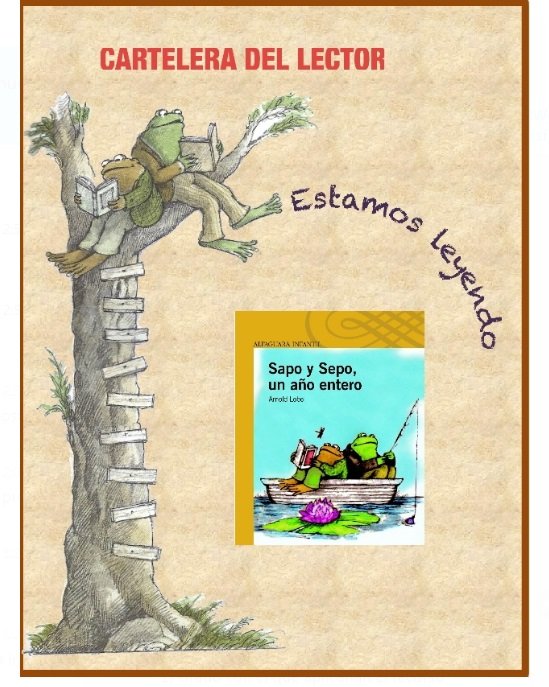
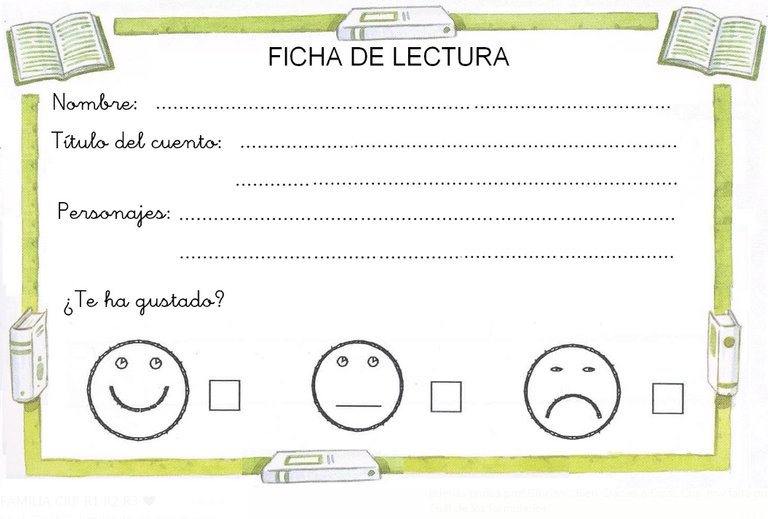
imágenes propiedad de la Licenciada Glorianni Herrera. Facilitadora
Y por acá les comparto mi adaptación:
1. Grado con el que aplicarían el recurso:
El grupo al cual se aplicará el recurso será 4to grado.
2. Instrucciones de uso del recurso elaborado
¿Cómo se aplicará la estrategia? ¿Cuándo? ¿De qué forma emplearlo?.
La Cartelera del lector se colocará en un lugar visible, y todos los estudiantes deben participar en la elaboración de la misma, así como también estar al tanto de que se trabajará con ella a lo largo del Proyecto de Aprendizaje. Ya que serán ellos junto al docente quienes le darán vida a la misma.
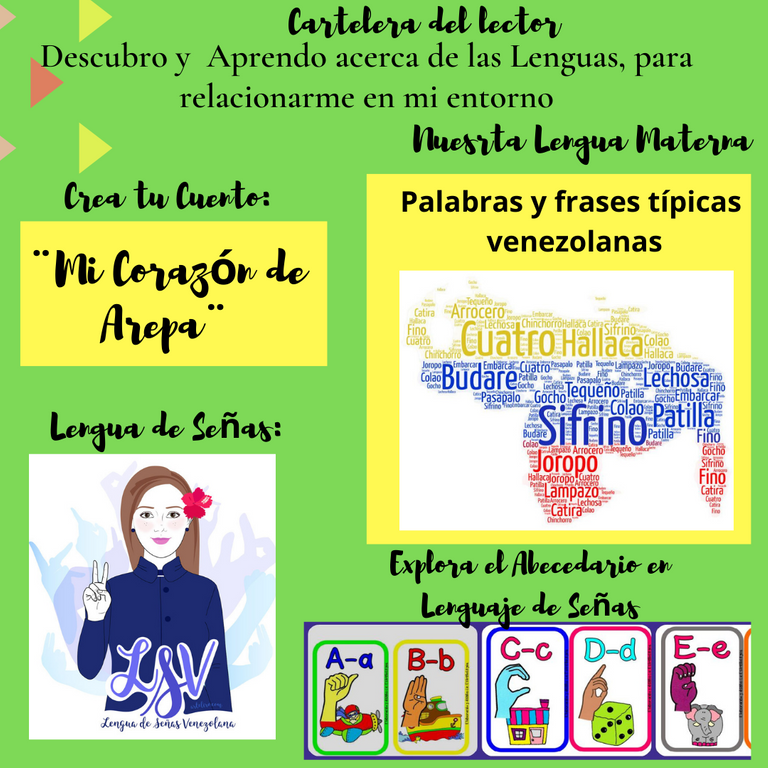
imágenes creadas en canva, con apoyo de la página guía infantil
A modo Particular el docente puede describir ¨Mi Corazón de Arepa¨ como una historia Venezolana de nuestros hogares, en la que demostramos amor al ofrecemos a los bebes que aún no comen alimentos sólidos, nuestro desayuno tradicional.
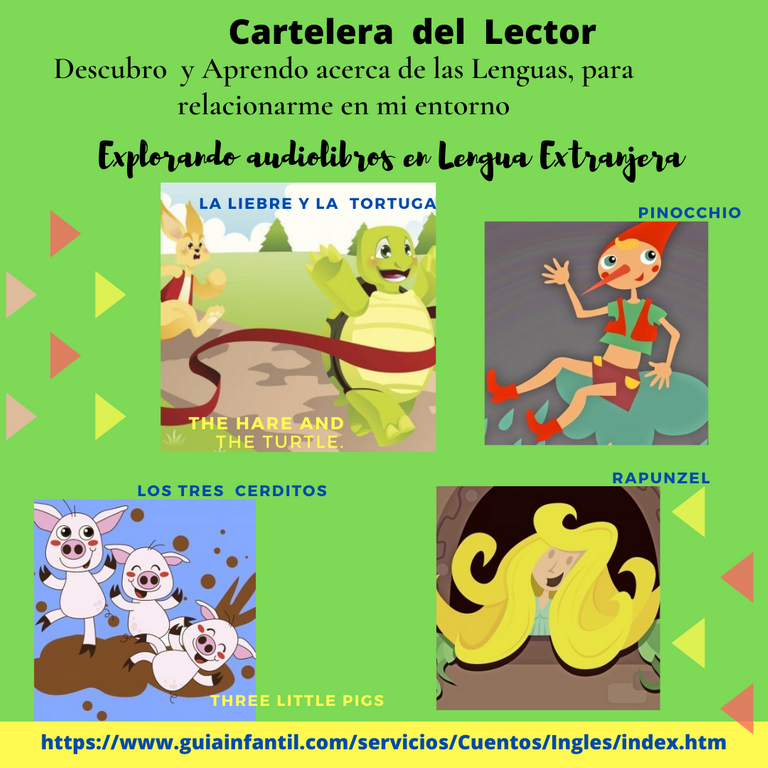
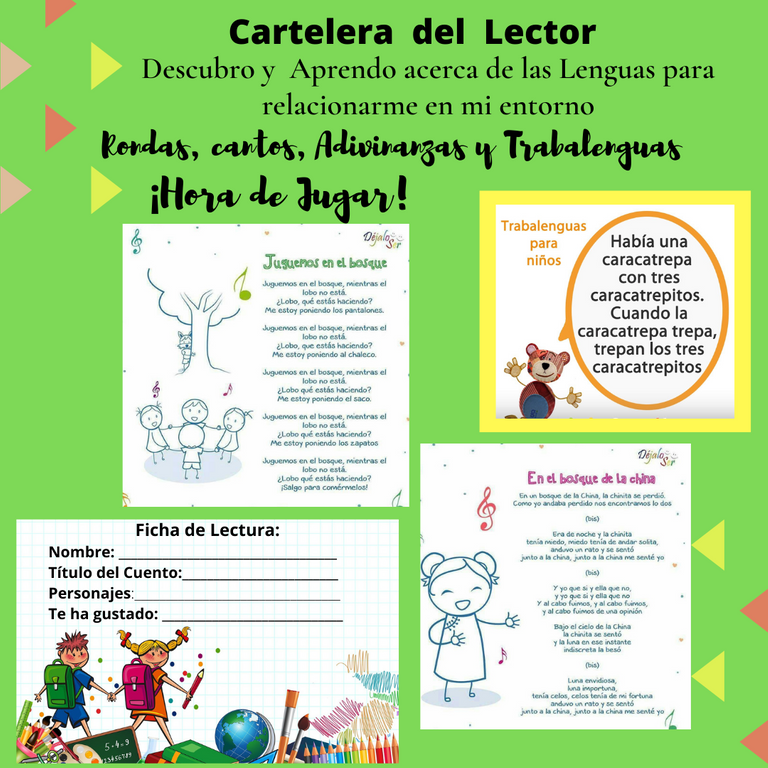
3.Responsables de realizar el recurso (docentes, representantes o estudiantes) y responsables de interactuar con el mismo (sólo estudiantes, representantes y estudiantes, estudiantes y docente).
-Si la estrategia es aplicada en el aula, los responsables son el docente, estudiantes y representantes en caso de asignar la elaboración del cuento para el hogar.
-Los responsables de interactuar con el mismo serán los estudiantes, representantes y docentes.( en ambos casos).
4.Propósito didáctico con el cual lo aplicarían en sus estudiantes (finalidad ¿qué habilidad desea desarrollar en ellos?
La habilidad que se desea desarrollar en el estudiante es la de crear cuentos cortos ilustrados a partir de diversos títulos otorgados. En los cuales se denote progresivamente el desarrollo de su escritura, lectura, creación escrita y diseño de imágenes a partir de su propia imaginación. Con los cuales demuestre interés comodidad y empatía en el desarrollo del proceso lector.
5.Lugar de aplicación del recurso (escuela o casa).
La estrategia está diseñada para ser elaborada y guiada en el aula de clases. Sin embargo se puede adaptar a que cada estudiante elabore su cartelera lectora en el hogar, ya que los cuentos serán creados por el mismo a partir de las orientaciones del docente. Así mismo se cuenta con la ficha Lectora, en la cual el niño recopilará por cada actividad, algunos datos de interés para el docente y su registro.
Finalmente y a manera de recomendación personal, los invito a tomar la lectura como un hecho divertido; dejando de lado al finalizar la lectura la acostumbrada pregunta; ¿Qué entendieron? ¿Cuál es la moraleja?. Porque a veces, nos cerramos a sólo esa situación de que toda lectura nos debe dar una reflexión; a lo cual es importante comprender que cada niño es un ser individual y adapta lo leído a su entorno o experiencias. Así mismo consideremos que tan sólo la creación de un cuento o la motivación al hecho lector, es un gran logro para ese ser!
Gracias por seguir hasta el final conmigo, Espero te hayas divertido tanto como yo en esta experiencia!
💮 ✨ 💮 English Version ✨ 💮 ✨

Hi Hivers! Today I want to share with you my valuable participation in a great chat forum, which Empresas Polar is carrying out, together with all its qualified personnel in educational matters in order to reinforce distance learning processes during this pandemic; they are aimed at teacher training. The training we are receiving at this time is called: Reading and Writing, for which I prepared the following subject focused on 4th grade primary school teachers.
I hope you like it and it will serve you for possible educational uses.
Among the guidance received in a personalized way was to prepare the strategy that the facilitator gives you individually; but you had to adapt it to your environment. My strategy is called The Reader's Billboard. The intention is that the strategy or resource encourages reading and writing.
It should reflect:
1.-Degree to which they would apply the resource.
2.-Instructions for use of the resource prepared
How will the strategy be applied? When? How to use it?
3.- Responsible for making the resource (teachers, representatives or students) and responsible for interacting with it (only students, representatives and students, students and teacher).
4.- Didactic purpose with which they would apply it to their students (purpose, what skill do you want to develop in them?
5.- Place of application of the resource (school or home)
At the same time I received these images to guide me:


And here I share my adaptation:
1. Degree to which they would apply the resource:
The group to which the resource will be applied will be 4th grade.
2. Instructions for use of the resource prepared
How will the strategy be applied? When? How to use it?
The Reader's Billboard will be placed in a visible place, and all students must participate in the development of it, as well as be aware that it will be worked with throughout the Learning Project. Since it will be them together with the teacher who will give life to it.

imágenes creadas en canva, con apoyo de la página guía infantil
Initially, the elaboration of a story is promoted from the title: ¨Mí Corazón de Arepa¨. It will be designed by each child according to their imagination, the teacher can guide how long they want the narration of the story. It will be accompanied by images alluding to said text. Little by little during the meetings in the classroom the stories made will be read. This title is conducive to making reference in the classroom to the mother tongue and the acquisition of it, our phrases and typical or colloquial words; as well as the diversity in our Venezuelan families regarding the entry of foreigners to form new homes, which results in the difference in speech. In the same way, the compass is opened for other possible titles that children consider to describe the Venezuelan gentilicio, to promote other written creations.
In a particular way, the teacher can describe ¨Mi Corazón de Arepa¨ as a Venezuelan story of our homes, in which we show love by offering our traditional breakfast to babies who still do not eat solid food.
In the same vein and as a way of working on inclusion through Languages, the Venezuelan sign language can be inserted, starting with the illustrated alphabet of the same. Although we will not elaborate a story about it, it can give way to the elaboration of illustrated alphabet books, simple sentences with illustrations, days of the week, expressions of feelings, among other examples that are easy for the student to understand.
In the same way, other activities can be directed, such as: watching videos, differences between sign language from other countries, importance of this language, visiting the classroom of a specialist on the subject, among others.

In this strategy we can also work hand in hand with our specialists in the area of Foreign Languages within the institution, to motivate the reading of illustrated children's stories in both languages; either stories known to children or some of their interest.
Today we have on hand the use of audio books, which are easy to download for use in classrooms and can facilitate the enjoyment of the activity. In turn, these allow the student to sharpen his ear in this regard. However, it is important to consider the foreign language as one more point in favor of the teacher to motivate the student in reading, and not as an isolated issue in the learning processes.

Finally, on the reader's billboard we can also insert the reading of songs, traditional rounds and tongue twisters; what in a second opportunity could be propitiated for the game in the classroom. It should be noted that the tongue twister can seem like a simple challenge, a game without more, saying difficult words as quickly as possible, right? But no, children's tongue twisters are a fantastic cognitive exercise.
On the one hand, the reading of tongue twisters is an exercise in diction, which is the ability to read correctly and pronounce a text aloud with the appropriate tone. Something apparently simple, but that is complicated if you do not have developed reading skills. On the other hand, they represent a very fun linguistic exercise, convoluted words that are intoned with a certain musicality.And the speed of reading, a challenge that anyone can try to overcome ...Are you able to read it faster? And so there always comes someone who wants to bring a more complicated one, from that point is where the important and educational fact of reading is encouraged, as well as fun.
3. Responsible for making the resource (teachers, representatives or students) and responsible for interacting with it (only students, representatives and students, students and teacher).
-If the strategy is applied in the classroom, those responsible are the teacher, students and representatives in case of assigning the elaboration of the story for the home.
-Those responsible for interacting with it will be students, representatives and teachers (in both cases)
4. Didactic purpose with which they would apply it to their students (purpose, what skill do you want to develop in them?
The ability to be developed in the student is to create illustrated short stories from various titles awarded. In which the development of their writing, reading, written creation and design of images is progressively denoted from their own imagination. With which they show interest, comfort and empathy in the development of the reading process.
5. Place of application of the resource (school or home).
The strategy is designed to be elaborated and guided in the classroom. However, it can be adapted to each student developing their reading board at home, since the stories will be created by the student from the teacher's guidance. Likewise, there is a Reading card, in which the child will collect, for each activity, some data of interest to the teacher and their record.
Finally and as a personal recommendation, I invite you to take reading as a fun fact; leaving aside at the end of the reading the usual question; What did they understand? What is the moral? Because sometimes, we close ourselves to just that situation that every reading should give us a reflection; to which it is important to understand that each child is an individual being and adapts what they read to their environment or experiences. Likewise, let us consider that just the creation of a story or the motivation to read is a great achievement for that being!
Thank you for following me to the end, I hope you had as much fun as I did in this experience!
Me gustó mucho la idea y es muy dinámica. Además, que estás integrando varios temas que pueden darle curiosidad a los estudiantes. Gracias por compartirlo